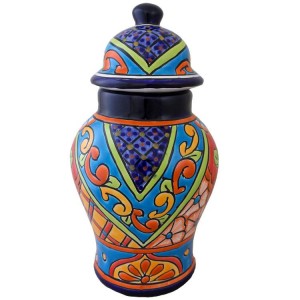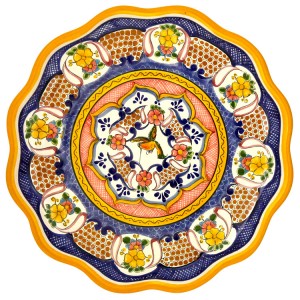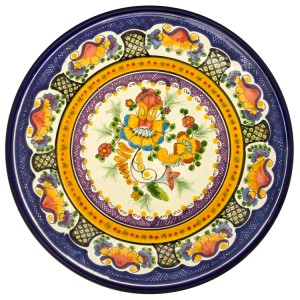 Are you interested to own and have been looking for genuine Talavera products? How would you know that the products offered by online distributors, and offline dealers and retailers are really authentic? Beware of imitations!
Are you interested to own and have been looking for genuine Talavera products? How would you know that the products offered by online distributors, and offline dealers and retailers are really authentic? Beware of imitations!
Talavera is a tin-enameled earthenware, Majolica pottery made and comes only from Puebla, Mexico, and its nearby communities of Atlixco, Cholula and Tecali.
This world-renowned hand-painted pottery is notable by a milky-white glaze. It comes in different forms, including both functional and decorative pieces such as plates, serving dishes, vases and tiles.
Here are some characteristics of genuine Talavera pottery:
Talavera is made from a mixture of only two clays, a dark clay and a light, slightly rose-colored clay.
The source of clay supply to make the Talavera comes from the Talavera geographic zone of Puebla and the communities of Atlixco, Cholula and Tecali.
Talavera is hand formed with a potter’s wheel or using molds, not poured. They are also hand-painted.
Talavera pieces have gone through two firings. The oven used to fire Talavera should be at least 800 degrees Celsius.
Talavera uses six color pigments, and its color combination enhances the workmanship sophistication of Talavera pieces.
The Talavera item is created by certified workshops in the state of Puebla Mexico using the traditional Talavera process.Workshops producing authentic Talavera are certified by passing an inspection and verification process at least every six months. The Mexican Talavera Regulatory Council regulates the production of Talavera and restricts the use of the term to items produced within the designated zone of Puebla. There are only less than 20 certified workshops producing genuine Talavera.
Certified Talavera pieces bear the signature of the potter, the logo of the workshop and the special hologram that certifies the piece’s authenticity. Only pieces from workshops that meet the standards are certified.
You can buy Talavera in many shops and throughout places in Mexico and globally. Some workshops also offer tours where you can see how it is being made.
There are also a number of shops now that offer non-certified and authentic but still high quality Talavera products.
Authentic Talavera is costly, as every piece is one of its kind and of excellent quality. However, imitations may be as pricey and seemingly unique. You need to be extra careful that your money is really worth the Talavera item you have with.


